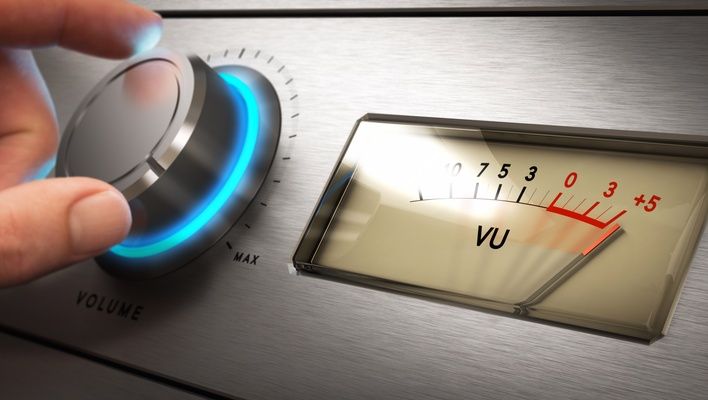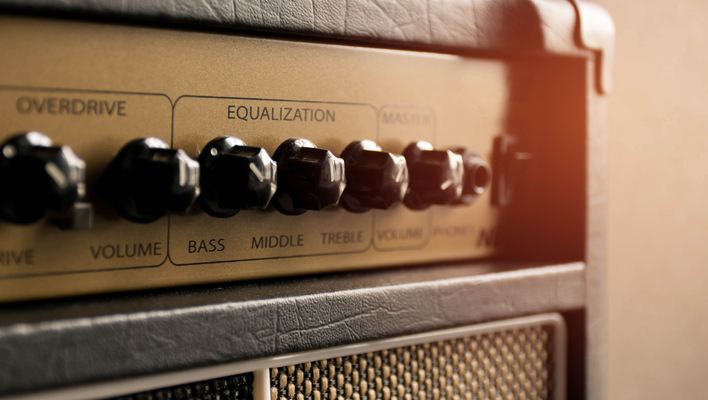You just installed your new amp, but the mids and highs seem all wrong. Don’t give up just yet. We’ll show you how to tune a car amp for mids and highs right.
You recently bought a new pair of aftermarket speakers, a brand new amp, got the system installed by a professional team but there is one problem. The mids and highs are nowhere near what you expected. The highs, lows, and mid-range frequencies need to be fixed before any damage comes to your equipment. The truth is, you may fully realize your amp’s full potential until you find the right balance between the lows, the mids, and the highs. Fortunately, learning how to tune a car amps for mids and highs for car audio beginners is not as difficult as it seems.
Car stereos process audio signals from the input source (Bluetooth devices, RCA inputs, CD, radio, etc.) and convey the output to the amp, which has several settings, including gain, sub-gain, bass controls, treble, mids, lows, and high-frequency settings. To get top-quality music, you need to ensure that each frequency goes to its rightful driver. This comes after passing the audio signal through different sets of filters.

Basic Terms and Car Amp Settings
How do I adjust my amp for highs and lows? First of all, car amplifiers come with different setups. A successful adjustment depends on many variables such as the music being played, speakers, and the system. Amplifiers also have many settings at the back of the amp, which might confuse you. Here are the most crucial ones you need to know about when tuning a car amp for mids and highs.
Frequency
Frequency in audio engineering refers to the number of vibrations per second. It is measured in Hertz (HZ). One hertz is equal to one cycle per second.
At higher frequencies, audio signals produce high-pitched sounds. Frequency can also help explain what are low mids and highs in music. For instance, low frequencies are more about the bass. You need to have subs and bass speakers (bass speakers) to play low frequencies without putting the other speakers at risk.

On the other hand, high frequencies are produced by instruments (hats, cymbals, and other highly pitched instruments) you hear in music. The human ear is limited to a certain frequency range (20Hz-20kHz). Car amplifier manufacturers label frequency settings differently; some in Hz, others use Decibels (dB), while most use terms like super bass, LPF, HPF, etc.
Gain
Gain refers to the amp’s sensitivity. This setting plays an essential role in steering your system clear from distortion. Adjusting the gain would imply getting a higher or lower loudness at the amp’s input, unlike volume, which affects the output from the speakers. The higher the gain setting, the closer you are to getting distorted sounds from your speakers. You should set the gain at the right value to ensure that the speakers don’t handle too much power and experience distortion.
Crossovers
Every car with a stereo needs a crossover to ensure that the right signal gets to its rightful driver. A crossover is an electronic component embedded in your car’s audio circuitry to split an audio frequency into different ranges so that each range can be channeled to its rightful speaker. Tweeters receive the highest frequency, woofers receive mid-range frequencies, while subs receive the lowest frequency.
High and Low Pass Filters
A high pass filter ensures that only high frequencies up to a certain cutoff get to the speakers. In short, they block lower frequencies. High pass filters work with tweeters and other small speakers that might get damaged when a low-frequency signal passes through them.
Low pass filters are the opposite of high pass filters. They allow frequencies lower than a certain cut-off to be transmitted to the subs and bass speakers. They filter out the noise from the signal, leaving behind a smooth bass signal.
Now that you’re familiar with the terminology, we can dive into how to adjust car amplifier settings. Tuning a car amp for mids and highs also depends on what kind of amp you’re running on your stereo. For starters, you’ll have to ensure that the low frequencies are nowhere near your mids and highs speakers.

Tuning the Mids and Highs
Getting the right lpf and hpf for mids and highs requires the right gain settings for your amp. Distortion is a problem that most car audio enthusiasts have had to put up with, but the good news is that it can be minimized or completely eliminated. It remains one of the worst problems that could bring permanent damage to your speakers. It arises when you set the gain control too high. At this point, your amp sends clipped signals to the speakers. Things get worse when you play loud music with distortion since the speakers are overworked.
To find the right gain settings, play your favorite song (since you know exactly what it should sound like). Next, locate the amp and turn down the gain knob to a value slightly less than half – not all the way down. Turn the volume up to about 75% and listen to the music play. Turning the volume all the way up may not work out well since that’s where distortion kicks in.
Finally, head back to the amp and adjust the gain knob up until you hear the first sign of distortion. Using your hearing to set the gain is one of the simplest methods. You can also try other more accurate methods e.g. testing a car amplifier with a multimeter which uses a multimeter and simple math to find the right gain value.
Tuning the Highs
The high pass filter (HPF) is your go-to setting if you want only high frequencies from your speakers. It blocks out any lower frequencies that cannot be played well by your door speakers and tweeters. It also helps prevent low frequencies from frying your speakers.
If your amp has a HPF switch, you need to flip it on to activate the setting. Most amps come with the switch, but again, it all depends on the OEM. A HPF performs well when handling frequencies from about 80Hz to around 200Hz. Any lower than 80Hz should be channeled to the sub or much larger bass speakers. For the best experience, turn the HPF to 80Hz and the low pass filter (LPF) to capture frequencies below 80Hz. Doing this ensures that there are no gaps when playing music and that no frequency is completely left out.
Tuning the Mids
You’ve probably asked this question many times, what frequency should I set my mids? First of all, mid-range frequencies range from about 50-60 Hz for the car’s main speakers. Some audiophiles prefer using equalizers to get the most accurate settings.
The EQ settings do an important job removing the sharp peaks and dips which produce harsh sounds.
They also divide the signal into low, mid, and high frequencies, allowing you to tune them to your liking. Others prefer using an amp tuning app. The bottom line is, you want to set the treble a little bit higher than the mid-range frequencies for a better sound experience.
When tuning your amp, remember to do so in a manner that suits your needs. People have different tastes, so what sounds good to you may sound bad to another person. There’s no good or bad way to tune your amp unless it experiences distortion.
You may also read: How to Get Rid of Pioneer Amp Error
Final Thoughts
Now that you have a clue about how to tune a car amp for mids and highs, it would be important to mention that your system will sound its best when all settings are correct. The point of getting the right hpf and lpf settings on the head unit is to ensure that the speakers don’t play a frequency they’re not supposed to. This way, you’re not going to overwork your tweeters or get lower performance from your amp and subs. For more information about how to tune a car amp and how to get loud mids and highs, don’t hesitate to get in touch with us.
